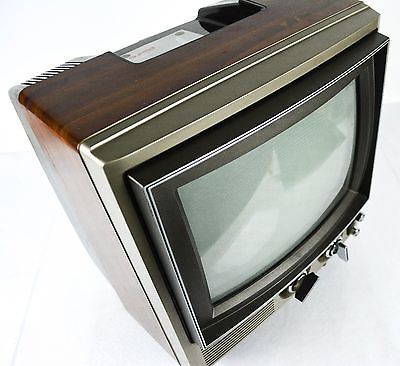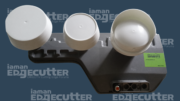The standard definition era is so far behind us that I’ve had people ask what the term “standard definition” means. Most folks have an understanding that it has something to do with old tube TVs. Technically, standard definition means any signal with a resolution of 720×480 or less (if it’s digital) or having 525 vertical lines or less (if it’s analog.) That’s how the scientists define it.
For regular folks, standard definition means the kind of blurry, square picture you grew up with. It’s the sort of TV picture you probably stopped being excited about, maybe 15 years ago when you first saw high-definition. Standard-definition TV can display on today’s screens. It just looks, kinda icky.
OK, now defining “headend.”
When it comes to television, “headend” means a closet where all the TV signals come in, get processed, and then combined on a single wire. This makes the signal very easy to transport, with just one wire going out. You can split the signal quite a few times before it becomes a problem. And best of all, in most cases, the signal doesn’t require a special box in order to display on your TV. Remember that folks, most cases.
Businesses like headend systems because they’re inexpensive to use. They scale up easily and don’t require a lot of maintenance. It’s the kind of TV system you’ll find in hotels, business centers, airports, and that sort of thing. Anywhere that there are a bunch of TVs and probably a small number of channels, that’s a headend.
The good and bad of HD headends
You would think by now no one would want a standard definition headend. But there are still a few folks out there who really do. Why? Two reasons, and one is going to come as no surprise to you at all.
Reason 1: cost
The biggest reason to go with a standard definition headend is cost. Yes, the equipment costs less to buy. Why? Mostly because everyone wants high definition. But just because a business chooses an SD headend doesn’t mean they’re cheap. It could mean they’re smart. They could be feeding TVs that are too small or too far away for anyone to even notice. This is often the case in fitness centers, for example. If you’ve been to a gym or fitness center, you’ll notice that some of the machines have TVs built in. The TVs are pretty small. There are much bigger TVs mounted up on the wall, usually pretty far away. In both cases, it’s pretty hard to even tell whether you’re watching standard definition or high definition.
Reason 2: encryption
The other reason people go with SD headends is encryption. Some systems, like DIRECTV’s COM3000 and DISH’s Smartbox, use encryption. You can’t watch TV unless you either use a special TV or a converter box. These systems were originally designed for hotels. Don’t ask me why but there’s always this fear that people will go to a hotel and try to steal all the programming. It’s mostly Disney that has this fear, and they won’t let any of their channels (not ABC, not ESPN, not any of the other channels they own) on hotel systems without some sort of promise that no one will steal their stuff. It’s kind of a stupid fear, but DIRECTV and DISH have to live with it.
If you need encryption, you either need to buy a TV with that system built in or you do need a separate box outside the TV. The encryption-enabled TVs aren’t really more expensive, but often times people already have TVs they want to use. The converter boxes are pretty benign, but sometimes people don’t want them. So they choose a standard definition system. I guess Disney doesn’t care if anyone steals Mickey Mouse as long as he’s nice and blurry.
Get the headend you need
At Solid Signal, we don’t judge. If you want a standard-definition headend for whatever reason, we’re here to help you get it. Our commercial and activations arm, Signal Connect, specializes in making sure that our customers have the best possible experience. Give us a try! Call us at 888-233-7563 during East Coast business hours, or fill out the form below and we’ll get back to you!





